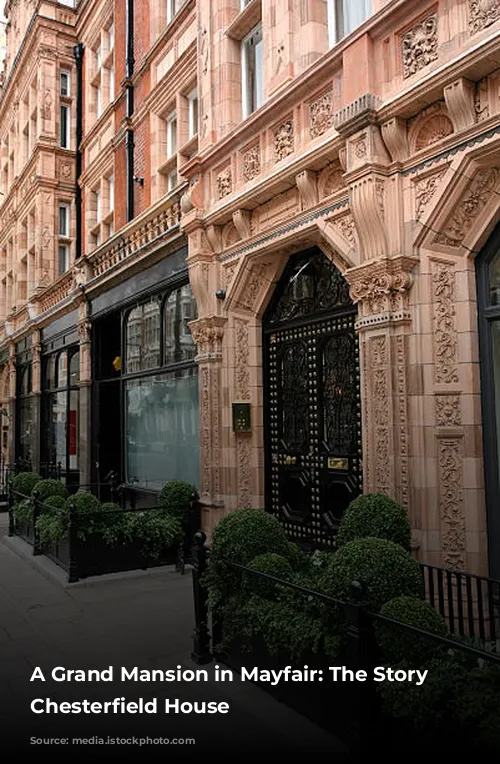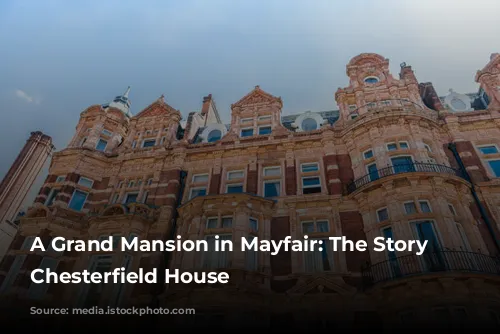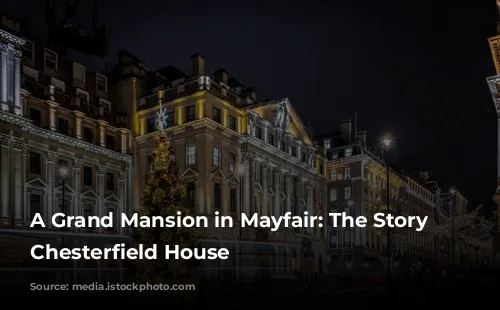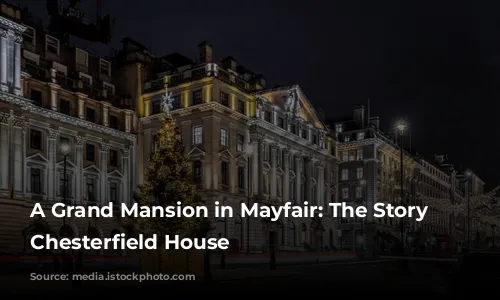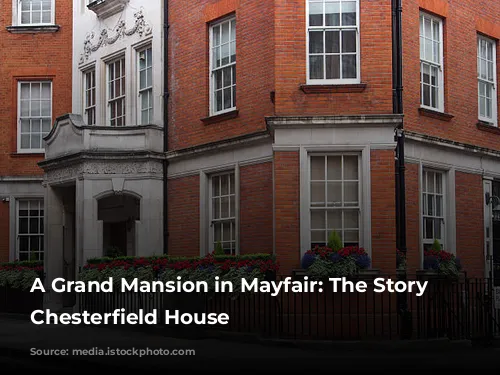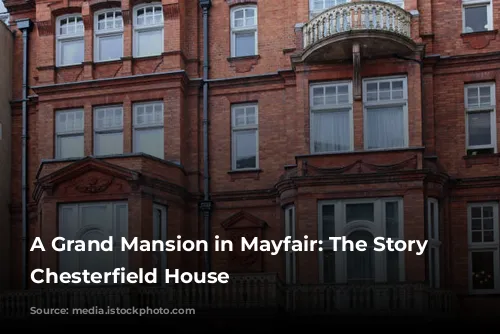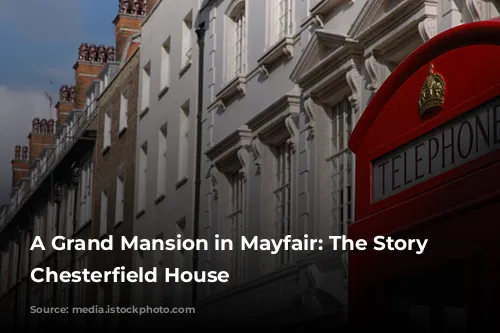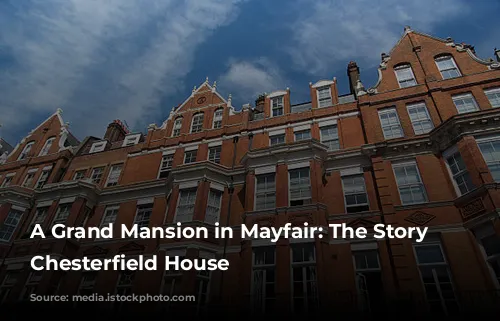Chesterfield House, a magnificent London townhouse, stood proudly in the prestigious neighborhood of Mayfair. This architectural gem, built between 1747 and 1752 by Philip Stanhope, 4th Earl of Chesterfield, a prominent statesman and writer, was a testament to the era’s refined tastes. The house’s exterior showcased the elegance of the Palladian style, while its interior embraced the grandeur of the Baroque period.
This paragraph introduces the topic of Chesterfield House, highlighting its significance as a grand London townhouse built by a prominent figure. It also provides context by mentioning the architectural styles used in its construction.
Located on the north side of Curzon Street, between South Audley Street and what is now Chesterfield Street, the house was a sight to behold. However, time and urban development took their toll, and Chesterfield House was sadly demolished in 1937. Today, a modern apartment block, bearing the same name, occupies the site where this iconic residence once stood.
This paragraph describes the location of the house and its eventual demolition, leaving readers with a sense of nostalgia for the lost architectural treasure.
A Glimpse of Luxury
Pierre-Jean Grosley, a renowned French travel writer, considered Chesterfield House to be on par with the luxurious residences of Paris’ nobility. In his book “Londres” (1770), he expressed admiration for the house’s grandeur, highlighting its status as a symbol of aristocratic wealth and refinement.
This paragraph emphasizes the importance of Chesterfield House, noting its recognition as a prestigious residence even by foreign travelers.
The house’s architect, Isaac Ware, skillfully built it on land belonging to Richard Howe, 1st Earl Howe. Lord Chesterfield himself documented his progress in his “Letters to his Son,” writing from “Hotel Chesterfield” on March 31, 1749: “I have yet finished nothing but my boudoir and my library; the former is the gayest and most cheerful room in England; the latter the best. My garden is now turfed, planted and sown, and will in two months more make a scene of verdure and flowers not common in London.”
This paragraph delves into the construction of the house, providing insights into the design choices and the earl’s personal touches.
A Treasure Trove of Art and Literature
The Quarterly Review in 1809 described Chesterfield House as a “magnificent mansion” filled with exquisite furnishings and decorations. The publication particularly praised Lord Chesterfield’s vast and beautiful library, which it considered “the finest room in London.” The walls of this extraordinary space were adorned with a rich collection of literature, portraits of famous authors, and classical inscriptions. The library also featured ornate mantelpieces, cabinets with busts of orators, and delicate statuettes, creating an atmosphere of intellectual refinement and artistic beauty.
This paragraph showcases the impressive interiors of the house, particularly focusing on the library’s grandeur and the collection of art and literature it housed.

A Legacy of Architectural Splendor
Lord Chesterfield drew inspiration from other grand houses of the time, incorporating elements from demolished mansions. The columns and marble staircase with a bronze balustrade were salvaged from Cannons, the former residence of James Brydges, 1st Duke of Chandos, while the portico and railings were purchased at the auction of Cannons’ materials in 1747. Further enriching the house’s decor, Lord Chesterfield acquired artifacts from the sale of Houghton Hall, the country house of Robert Walpole, including a magnificent 18-candle copper-gilt lantern.
This paragraph explores the house’s connection to other significant properties, revealing the earl’s keen eye for architectural detail and his desire to incorporate historical elements into his new residence.

A House Reflecting Its Owner’s Life
Edward Walford’s “Old & New London” offers a detailed description of Chesterfield House, highlighting its unique architectural features and reflecting the personality of Lord Chesterfield. The house boasted a grand marble staircase, a music room with intricate decorative symbolism, and a French-inspired drawing room with mirrored walls that multiplied the viewer’s reflection. The library, a testament to the earl’s love of literature, housed an impressive collection of books, while an ante-chamber provided a glimpse into the daily life of this influential figure.
This paragraph delves deeper into the house’s interiors, highlighting the various rooms and their significance in reflecting Lord Chesterfield’s life and interests.
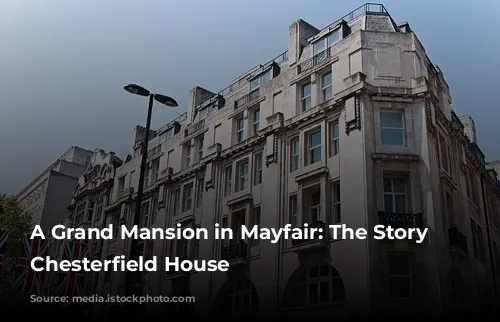
A Final Farewell to a Grand Residence
In the face of demolition in 1869, Charles Magniac, a prominent City merchant, acquired Chesterfield House for a substantial sum. He significantly reduced the house’s grounds and built a row of buildings overlooking Chesterfield Street, which were named Chesterfield Gardens.
This paragraph marks a turning point in the house’s history, highlighting the changes made after its purchase by Charles Magniac.
Lord Lascelles, who later married Princess Mary in 1923, purchased the house in 1919. However, the couple resided there only for a few years, moving out in December 1931. The house was eventually demolished, leaving behind a legacy of architectural grandeur and a reminder of the once-thriving social and cultural life of Mayfair.
This paragraph concludes the house’s history, bringing the story to a final chapter and emphasizing the loss of this architectural gem.
Chesterfield House, a magnificent blend of Palladian and Baroque styles, stood as a symbol of aristocratic life in 18th century London. Despite its eventual demolition, the house’s legacy lives on, reminding us of the grandeur and sophistication of a bygone era.
This concluding paragraph summarizes the article, highlighting the significance of Chesterfield House and its place in London’s architectural history.
